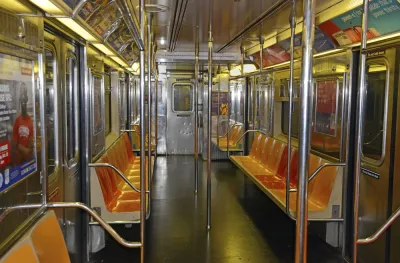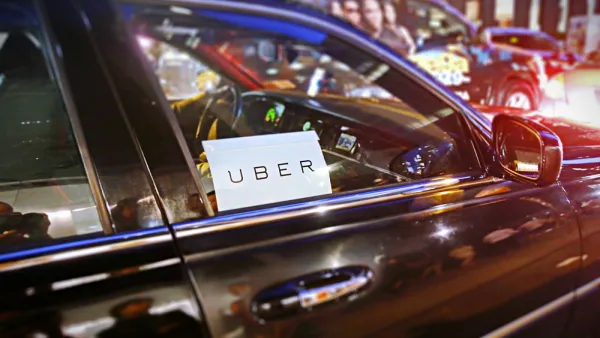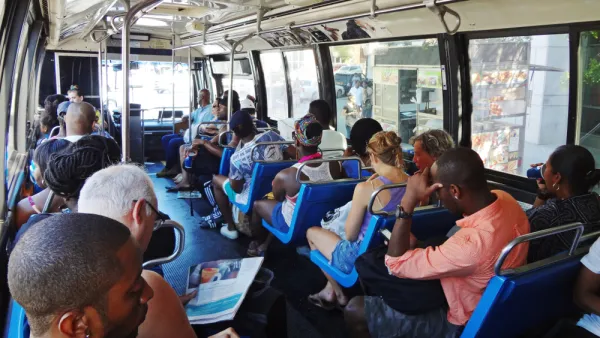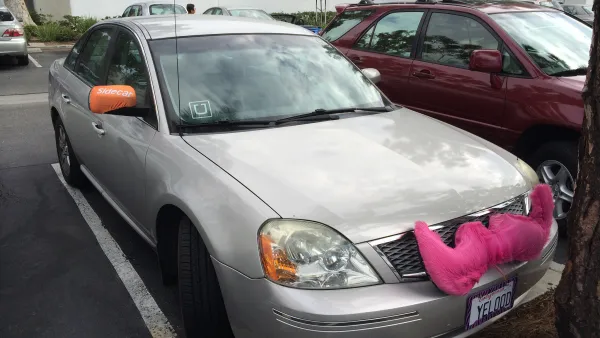Subsidizing rides through the companies has turned out to be cheaper than running bus routes in some places.

In a number of cities around the United States, transportation agencies are partnering with Uber and Lyft to provide subsidized rides, sometimes through federal grants. In some cases—especially in suburban areas—these arrangements are meant to allow cities to cut low-performing bus and shuttle lines.
Uber has made several such deals in Florida; Lyft begins its first, in Colorado, this month.
In Skift, Joshua Brustein of Bloomberg calls the trend an "oasis of rapprochement" between ride-sharing companies and local governments, which have repeatedly tangled over regulations, data-sharing, and competition.
But, as contracted drivers "effectively become part of the public transportation system," many of the same sources of conflict will remain at play:
Issues of control are going to test these friendships … Local governments are eager for data about ridership that they can use to reconfigure services, and Uber and Lyft tend to see information about demand as trade secrets. If ride hailing does drive down car ownership, as both Uber and Lyft expect it will, that could increase demand for subsidized rides, leaving governments holding the tab for new forms of semi-public transit.
The article also compares these partnerships to those made with Bridj, a startup that runs private buses.
In some cities, the deals are envisioned as a first-mile/last-mile solution—applying only to rides to and from a regional rail stop, for example. But, if they catch on, more questions on equity and reliability will follow:
What happens to people without smartphones? How do Uber and Lyft serve disabled riders? What happens if the cities come to rely on the apps, only to have the private companies decide the partnerships are no longer a sensible business venture for them? And do public governments want to encourage the replacement of public sector jobs with the contract work that defines the sharing economy?
FULL STORY: Uber and Lyft Work With Cities to Replace Public Buses

Analysis: Cybertruck Fatality Rate Far Exceeds That of Ford Pinto
The Tesla Cybertruck was recalled seven times last year.

National Parks Layoffs Will Cause Communities to Lose Billions
Thousands of essential park workers were laid off this week, just before the busy spring break season.

Retro-silient?: America’s First “Eco-burb,” The Woodlands Turns 50
A master-planned community north of Houston offers lessons on green infrastructure and resilient design, but falls short of its founder’s lofty affordability and walkability goals.

Test News Post 1
This is a summary

Analysis: Cybertruck Fatality Rate Far Exceeds That of Ford Pinto
The Tesla Cybertruck was recalled seven times last year.

Test News Headline 46
Test for the image on the front page.
Urban Design for Planners 1: Software Tools
This six-course series explores essential urban design concepts using open source software and equips planners with the tools they need to participate fully in the urban design process.
Planning for Universal Design
Learn the tools for implementing Universal Design in planning regulations.
EMC Planning Group, Inc.
Planetizen
Planetizen
Mpact (formerly Rail~Volution)
Great Falls Development Authority, Inc.
HUDs Office of Policy Development and Research
NYU Wagner Graduate School of Public Service




























